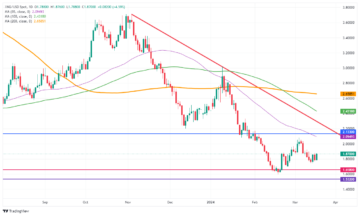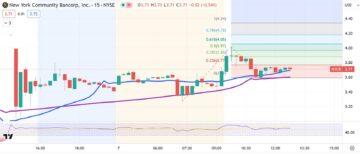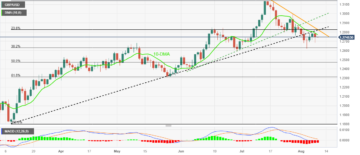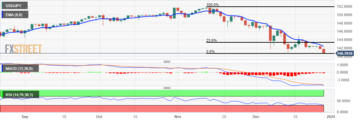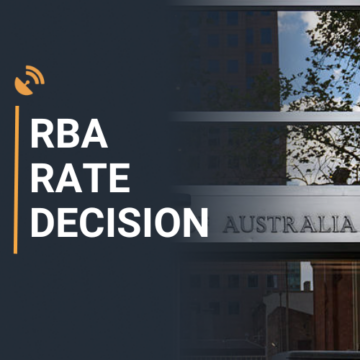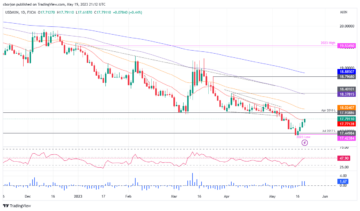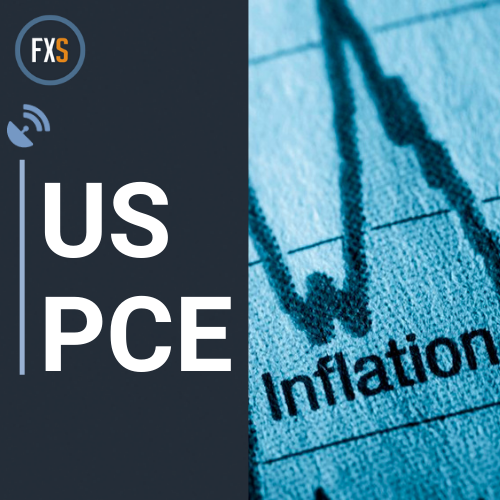
- The core Personal Consumption Expenditures Price Index is set to rise 0.3% MoM and 2.8% YoY in February.
- Markets see a strong chance of the Federal Reserve lowering the policy rate by 25 basis points in June.
- The revised Summary of Projections showed that policymakers upwardly revised end-2024 core PCE forecast to 2.6% from 2.4%.
The core Personal Consumption Expenditures (PCE) Price Index, the US Federal Reserve’s (Fed) preferred inflation measure, will be published on Friday by the US Bureau of Economic Analysis (BEA) at 12:30 GMT.
What to expect in the Federal Reserve’s preferred PCE inflation report?
The core PCE Price Index, which excludes volatile food and energy prices, is seen as the more influential measure of inflation in terms of Fed positioning. The index is forecast to rise 0.3% on a monthly basis in February, at a slightly softer pace than the 0.4% increase recorded in January. February core PCE is also projected to grow at an annual pace of 2.8%, matching the previous reading. The headline PCE inflation is forecast to tick up to 2.5% (YoY).
The Federal Reserve’s revised Summary of Economic Projections (SEP), also known as the dot plot– published alongside the policy statement after the March meeting – showed that policymakers expect the annual core PCE inflation to be at 2.6% at the end of 2024, up from the 2.4% forecast seen in the December SEP.
When commenting on the policy outlook in the post-meeting press conference, Fed Chairman Jerome Powell reiterated that they need greater confidence of inflation moving sustainably down toward the 2% target before they start lowering the policy rate. Powell, however, argued that strong inflation numbers in January were impacted by seasonal effects.
Previewing the PCE inflation report, “Given still robust increases in the Feb CPI/PPI data, we look for another firm gain for the core PCE — though notably down from January’s 0.42% increase and from the core CPI’s 0.36% m/m February gain,” said Oscar Munoz, Chief US Macro Strategist at TD Securities, in a weekly report.
When will the PCE inflation report be released, and how could it affect EUR/USD?
The PCE inflation data is slated for release at 12:30 GMT. The monthly core PCE Price Index gauge is the most-preferred inflation reading by the Fed, as it’s not distorted by base effects and provides a clear view of underlying inflation by excluding volatile items. Investors, therefore, pay close attention to the monthly core PCE figure.
Stronger-than-forecast Consumer Price Index (CPI) and Producer Price Index (PPI) readings in January and February, combined with data that pointed to tight labor market conditions, caused markets to lean toward a delay in the Fed policy pivot from May to June. Nevertheless, the dot plot showed that policymakers still project the US central bank to cut the policy rate by a total of 75 basis points (bps) in 2024. Hence, markets are pricing in a more than 60% chance that the Fed will lower the policy rate by 25 bps to 5%-5.25% in June, according to the CME FedWatch Tool.
It will be tricky to assess the immediate impact of the PCE data on the US Dollar’s (USD) valuation because trading conditions will be thin on Easter Friday.
Even if the monthly core PCE Price Index rises at a stronger pace than expected, it might not be enough to cause investors to reassess the possibility of another policy hold in June. Nevertheless, it could still provide a boost to the USD, with markets doubting the size of the total reduction in the policy rate.
On the other hand, an increase of 0.2% or less in the monthly Core PCE Price Index could weigh on the USD. In this scenario, a bearish opening in the 10-year US yield could be seen when the bond market returns to action at the weekly opening next Monday.
FXStreet Analyst Eren Sengezer offers a brief technical outlook for EUR/USD and explains:
“The 200-day Simple Moving Average (SMA) and the 100-day SMA form a strong resistance for EUR/USD at 1.0830. As long as this level stays intact as resistance, technical sellers could look to retain control. On the downside, 1.0760 (Fibonacci 78.6% retracement of the October-December uptrend) aligns as next support before 1.0700 (Fibonacci 61.8% retracement). In case EUR/USD manages to reclaim 1.0830, buyers could take action and open the door for an extended rebound toward 1.0900 (psychological level, static level) and 1.0950 (Fibonacci 23.6% retracement).
US Dollar FAQs
The US Dollar (USD) is the official currency of the United States of America, and the ‘de facto’ currency of a significant number of other countries where it is found in circulation alongside local notes. It is the most heavily traded currency in the world, accounting for over 88% of all global foreign exchange turnover, or an average of $6.6 trillion in transactions per day, according to data from 2022. Following the second world war, the USD took over from the British Pound as the world’s reserve currency. For most of its history, the US Dollar was backed by Gold, until the Bretton Woods Agreement in 1971 when the Gold Standard went away.
The most important single factor impacting on the value of the US Dollar is monetary policy, which is shaped by the Federal Reserve (Fed). The Fed has two mandates: to achieve price stability (control inflation) and foster full employment. Its primary tool to achieve these two goals is by adjusting interest rates. When prices are rising too quickly and inflation is above the Fed’s 2% target, the Fed will raise rates, which helps the USD value. When inflation falls below 2% or the Unemployment Rate is too high, the Fed may lower interest rates, which weighs on the Greenback.
In extreme situations, the Federal Reserve can also print more Dollars and enact quantitative easing (QE). QE is the process by which the Fed substantially increases the flow of credit in a stuck financial system. It is a non-standard policy measure used when credit has dried up because banks will not lend to each other (out of the fear of counterparty default). It is a last resort when simply lowering interest rates is unlikely to achieve the necessary result. It was the Fed’s weapon of choice to combat the credit crunch that occurred during the Great Financial Crisis in 2008. It involves the Fed printing more Dollars and using them to buy US government bonds predominantly from financial institutions. QE usually leads to a weaker US Dollar.
Quantitative tightening (QT) is the reverse process whereby the Federal Reserve stops buying bonds from financial institutions and does not reinvest the principal from the bonds it holds maturing in new purchases. It is usually positive for the US Dollar.
- SEO Powered Content & PR Distribution. Get Amplified Today.
- PlatoData.Network Vertical Generative Ai. Empower Yourself. Access Here.
- PlatoAiStream. Web3 Intelligence. Knowledge Amplified. Access Here.
- PlatoESG. Carbon, CleanTech, Energy, Environment, Solar, Waste Management. Access Here.
- PlatoHealth. Biotech and Clinical Trials Intelligence. Access Here.
- Source: https://www.fxstreet.com/news/us-core-pce-inflation-set-to-ease-in-february-on-month-as-federal-reserve-rate-cut-bets-for-june-mount-202403290600
- :has
- :is
- :not
- :where
- $UP
- 1
- 10
- 11
- 12
- 2%
- 20
- 2008
- 2022
- 2024
- 23
- 25
- 30
- 4
- 6
- 75
- 75 basis points
- a
- above
- According
- Accounting
- Achieve
- Action
- adjusting
- affect
- After
- Agreement
- Aligns
- All
- alongside
- also
- america
- an
- analysis
- analyst
- and
- annual
- Another
- ARE
- argued
- AS
- assess
- At
- attention
- average
- away
- backed
- Bank
- Banks
- base
- basis
- BE
- bearish
- because
- before
- below
- bis
- bond
- bond market
- Bonds
- boost
- Bretton
- Bretton Woods
- British
- British Pound
- broadly
- Bureau
- buy
- buyers
- Buying
- by
- CAN
- case
- Cause
- caused
- central
- Central Bank
- Chance
- checked
- chief
- choice
- Circulation
- clear
- Close
- CME
- COM
- combat
- combined
- Commenting
- conditions
- Conference
- confidence
- consumer
- consumer price index
- consumption
- content
- control
- control inflation
- Core
- could
- Counterparty
- countries
- CPI
- credit
- crisis
- crunch
- Currency
- Cut
- cuts
- data
- day
- December
- Default
- delay
- does
- Dollar
- dollars
- Door
- DOT
- down
- downside
- during
- each
- easing
- Economic
- Economic Analysis
- effects
- employment
- end
- ends
- energy
- energy prices
- enough
- EUR/USD
- exchange
- excluding
- expect
- expected
- Explains
- extended
- extreme
- factor
- Falls
- FAQ
- fear
- Feb
- February
- Fed
- Federal
- federal reserve
- Federal Reserve’s
- Fibonacci
- Figure
- financial
- financial crisis
- Financial institutions
- financial system
- Firm
- flow
- following
- food
- For
- Forecast
- foreign
- foreign exchange
- forex
- form
- Foster
- found
- Friday
- from
- full
- Gain
- gauge
- Global
- GMT
- Goals
- Gold
- Gold Standard
- Government
- government bonds
- great
- greater
- Greenback
- Grow
- hand
- headline
- heavily
- helps
- hence
- High
- history
- hold
- holds
- How
- However
- HTTPS
- if
- immediate
- Impact
- impacted
- impacting
- important
- in
- Increase
- Increases
- index
- inflation
- Influential
- institutions
- interest
- Interest Rates
- Investors
- involves
- IT
- items
- ITS
- January
- jerome
- june
- known
- labor
- labor market
- Last
- Leads
- LEND
- less
- Level
- local
- Long
- Look
- lower
- lowering
- Macro
- manages
- mandates
- March
- Market
- market conditions
- Markets
- matching
- May..
- measure
- meeting
- might
- module
- mom
- Monday
- Monetary
- Monetary Policy
- monthly
- more
- most
- moving
- moving average
- necessary
- Need
- Nevertheless
- New
- next
- notably
- Notes
- number
- numbers
- occurred
- of
- Offers
- official
- on
- open
- opening
- or
- oscar
- Other
- out
- Outlook
- over
- Pace
- Pay
- pce
- per
- personal
- Pivot
- plato
- Plato Data Intelligence
- PlatoData
- plot
- points
- policy
- policymakers
- positioning
- positive
- possibility
- pound
- Powell
- ppi
- predominantly
- preferred
- press
- pressures
- Preview
- previous
- price
- Prices
- pricing
- primary
- Principal
- printing
- process
- producer
- project
- projected
- projections
- provide
- provides
- psychological
- published
- purchases
- QE
- QT
- quantitative
- Quantitative Easing
- quickly
- raise
- Rate
- Rates
- Reading
- rebound
- recorded
- reduction
- reinvest
- related
- release
- released
- report
- Reserve
- Reserve Currency
- reserves
- Resistance
- Resort
- result
- retain
- retracement
- returns
- reverse
- Rise
- Rises
- rising
- robust
- s
- Said
- scenario
- seasonal
- Second
- Second world war
- Securities
- see
- seen
- Sellers
- set
- shaped
- showed
- significant
- Simple
- simply
- single
- situations
- Size
- slightly
- SMA
- Stability
- standard
- start
- starts
- Statement
- States
- static
- stays
- Still
- Stops
- Strategist
- strong
- stronger
- stuck
- substantially
- SUMMARY
- support
- sustainably
- system
- Take
- Target
- TD
- TD Securities
- Technical
- terms
- than
- that
- The
- the Fed
- The United States of America
- The Weekly
- the world
- Them
- therefore
- These
- they
- thin
- this
- though?
- tick
- tightening
- timing
- to
- too
- took
- tool
- Total
- toward
- traded
- Trading
- Transactions
- tricky
- Trillion
- turnover
- two
- unchanged
- underlying
- unemployment
- unemployment rate
- United
- United States
- UNITED STATES OF AMERICA
- unlikely
- until
- uptrend
- us
- US Central Bank
- US Core PCE
- US Dollar
- US Federal
- us government
- USD
- USD value
- used
- using
- usually
- v1
- Valuation
- value
- View
- volatile
- war
- was
- we
- weaker
- weekly
- weigh
- weighs
- went
- were
- when
- which
- will
- with
- Woods
- world
- world’s
- Yield
- zephyrnet

